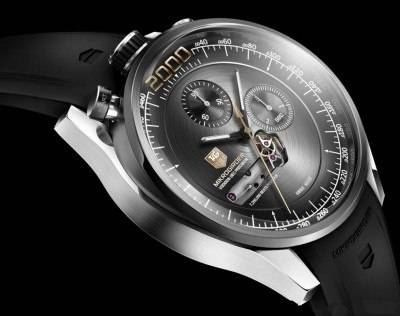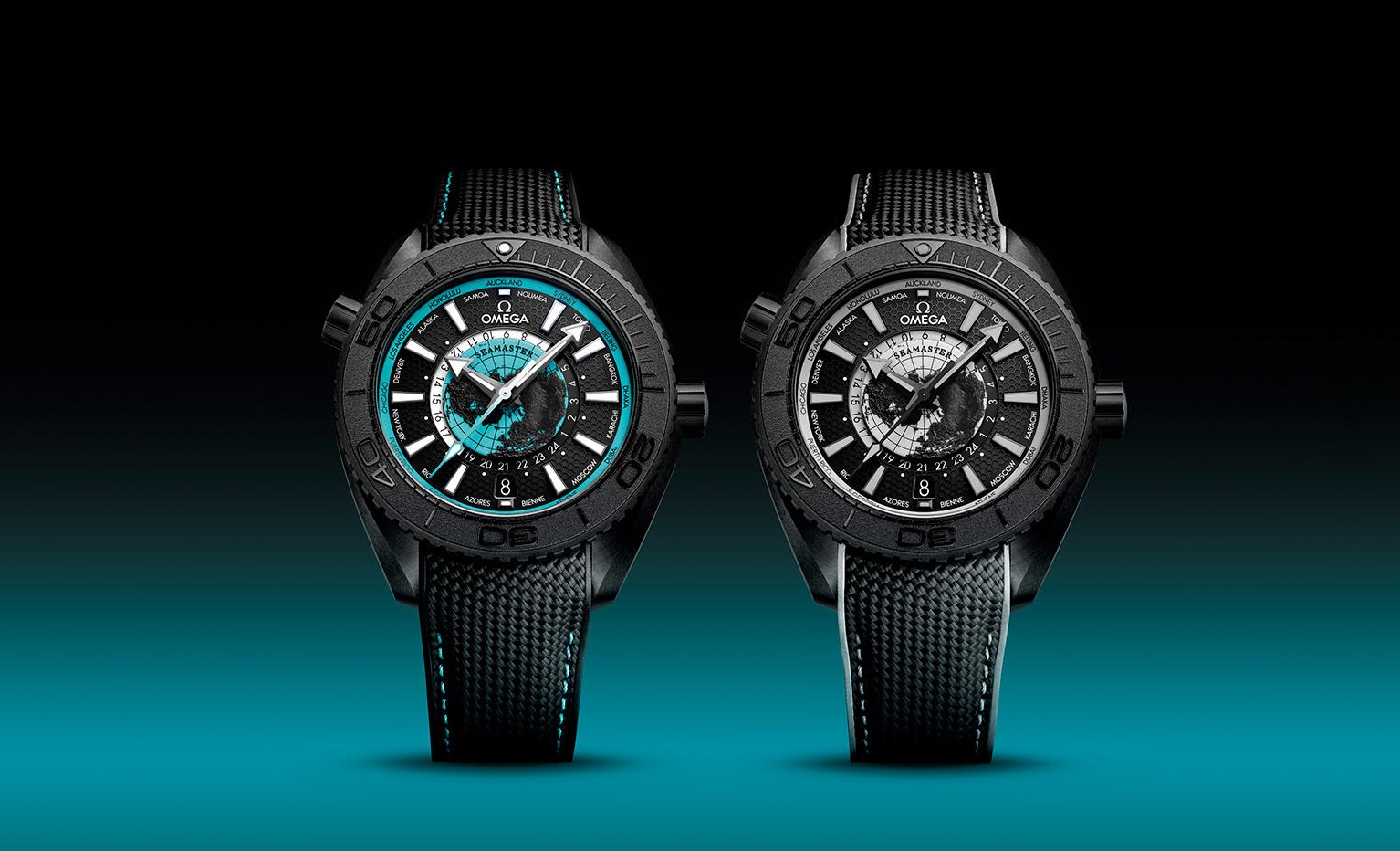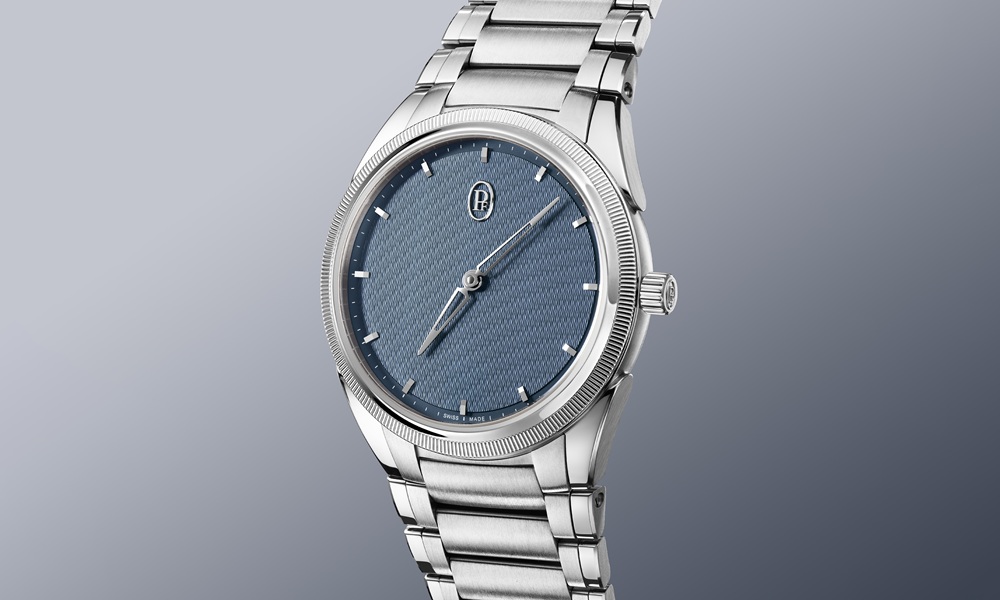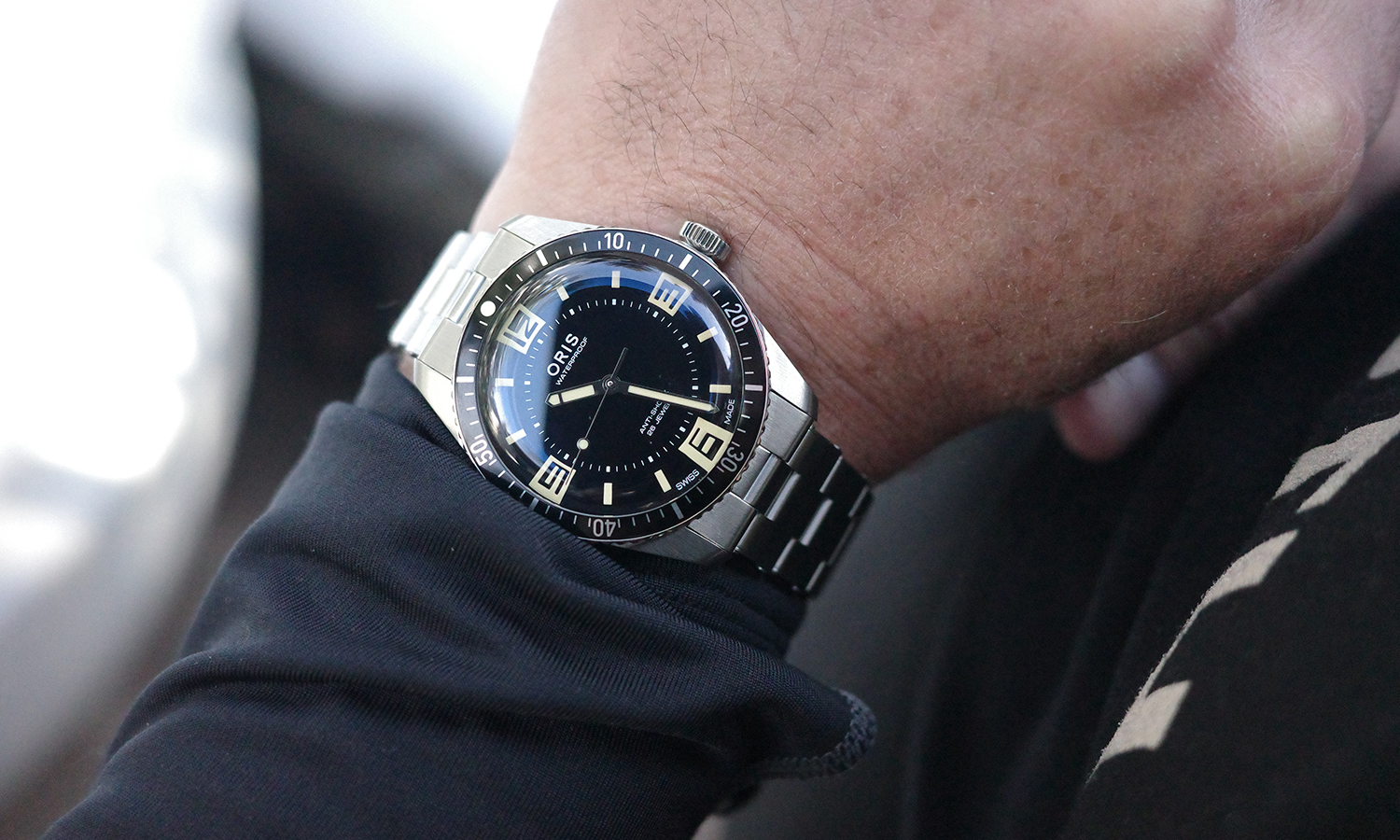
Speed King: Tag Heuer Presents The Mikrogirder 2000, The World Fastest Chronograph
A chronograph is basically a very simple device: it’s a combination of a wristwatch and a stopwatch. Able to tell time as well as measure elapsed time, it’s one of the most useful in daily life of all watchmaking’s complications, whether you’re timing a three minute egg or, as Apollo 13’s crew did, using one to time course correction engine burns to guide a crippled spacecraft home (the crew was forced to use their Omega Speedmaster wristwatches as all electrical power to their cabin instruments had been cut to conserve battery power.)
The simplicity of the description belies the complexity of the chronograph, however –of all of watchmaking’s complications it was the last to be invented. The first chronograph was invented in the 1820s by Nicolas Rieussec, and the first selfwinding chronograph watches didn’t appear until almost unbelievably late in watchmaking history –1969 was the year three different automatic chronographs came out almost simultaneously; ironically enough the same year that Seiko introduced the world’s first quartz wristwatch.
All chronograph wristwatches until fairly recently all worked in basically the same way. The same gear that drives the running seconds hand of the watch is engaged by a clutch to the gears that drive the chronograph hands. That means that the chronograph can only measure intervals of time as small as the number of times per second the watch ticks, which is determined by the number of times per second the balance wheel –the part of the watch that actually keeps time –swings back and forth. A watch that has a balance that beats 18,000 times per hour can therefore measure intervals of time as small as 1/5th of a second.
Watchmakers have pursued the goal of measuring even smaller intervals of time for many decades, and the first mechanical timepiece capable of measuring intervals as small as 1/100th of a second came surprisingly early –in 1916, Heuer (which became TAG –for Techniques d’Avant Garde –in 1985) introduced its Mikrotimer stopwatch, which had a balance that beat at an incredible 360,000 times per hour. The construction of a wristwatch capable of doing the same, however, had to wait until 2006, when TAG Heuer debuted its Carrera Calibre 360 –following it in 2011 with the world’s first chronograph capable of timing intervals as short as one thousandth of a second: the Mikrotimer Flying 1000. This watch dispensed with a conventional balance wheel entirely, using a new type of regulating device that for the first time allowed a mechanical oscillator beating 1000 times per second, to control a chronograph.
That seemed an unbeatable record, but this January, TAG Heuer showed that, at least for now, the only company that can beat TAG Heuer is TAG Heuer. The latest of its concept-car chronographs is the TAG Heuer Mikrogirder, which is capable of measuring intervals as small as 1/2000th of a second. Not only has this never been done before, it would undoubtedly have been dismissed as impossible even a few short years ago, and yet the solution TAG Heuer has found to the problem is amazingly straightforward. Instead of using a spiral spring (which has been used to regulate clocks and watches since the late 17th century, and which is still used –albeit in a very modified form –in the Mikrotimer Flying 1000) TAG employs a vibrating blade spring constructed very precisely so as to have stable oscillations at very high frequencies. The system could theoretically be driven to even higher frequencies and it appears to be both simple and robust. For now, it’s a prototype, but TAG Heuer has shown a determination to commercialize its advanced prototype watches rather than allowing them to remain simply proofs-of-concept. Who knows –one day, watch lovers may have an opportunity to find out for themselves what it’s like to wear the fastest watch on Earth.
The TAG Heuer Mikrogirder is not available for purchase at this time . . . but keep your fingers crossed
Like Haute Time? Join our Facebook page or follow us on Twitter @hautetime.
 SIGN UP
SIGN UP










